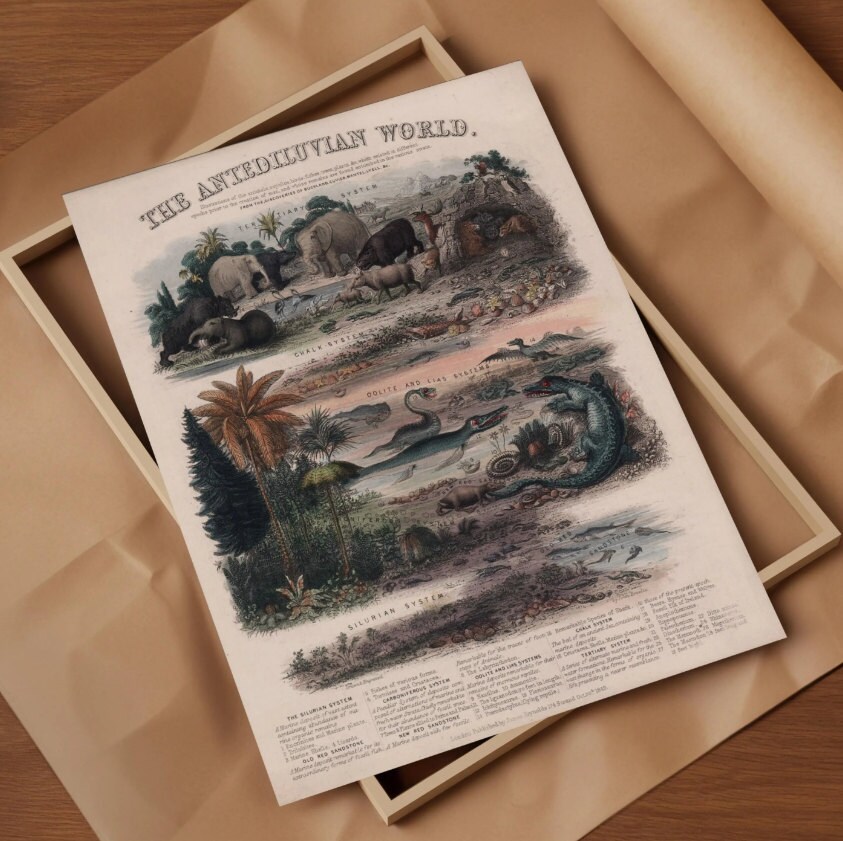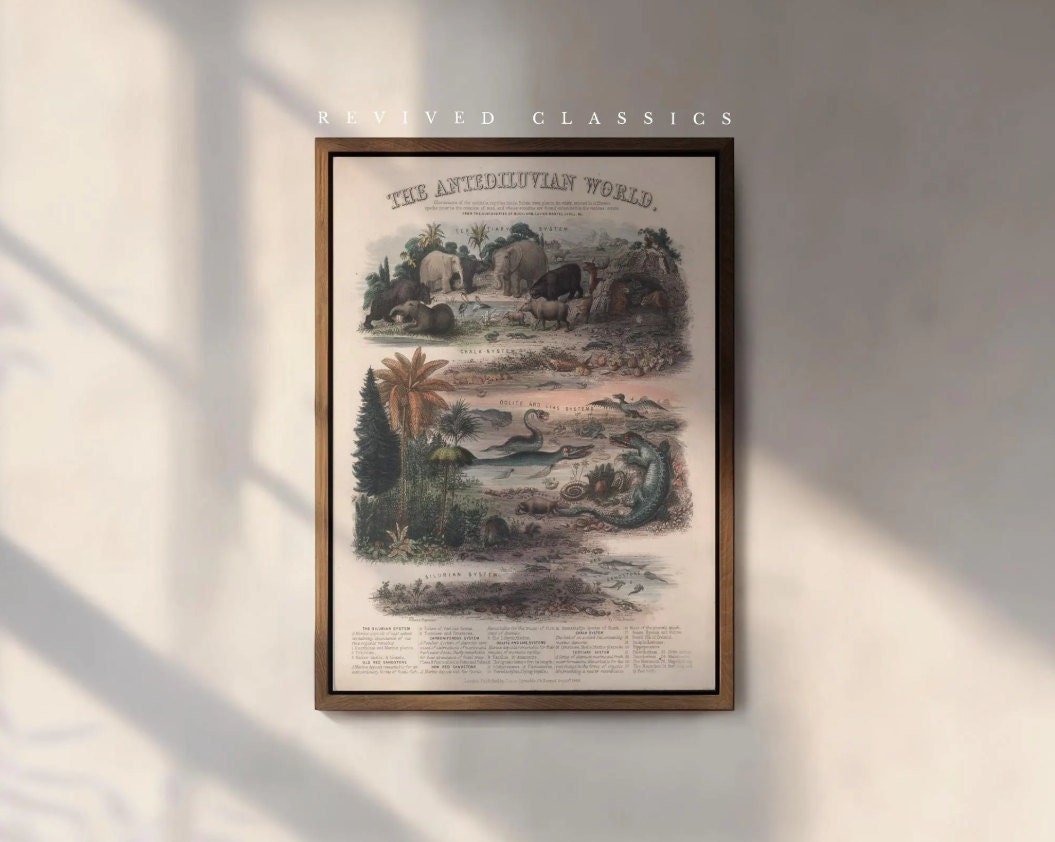In the 19th century, science and art converged in ways that captivated public imagination and transformed how people understood the world. One fascinating product of this era is the lithograph The Antediluvian World, a richly illustrated depiction of prehistoric life and Earth's geological past. This blog explores the origins, creators, and historical significance of this iconic piece.
What is The Antediluvian World?The lithograph The Antediluvian World is a Victorian-era educational chart that visually represents the prehistoric world, dividing Earth's history into distinct geological eras.
The term "antediluvian" means "before the flood," a biblical reference often used during the 19th century to describe the ancient, pre-Flood world. The chart combines paleontological reconstructions with stratigraphic layers, illustrating how Earth and its inhabitants evolved over time.The poster’s main sections highlight key geological systems such as:
- The Tertiary System: Featuring mammoths, elephants, and other large mammals.
- The Cretaceous and Jurassic Systems: Depicting marine reptiles like ichthyosaurs and plesiosaurs.
- The Silurian System: Including early aquatic life forms, such as trilobites and primitive fish.

Each layer also contains intricate illustrations of the corresponding flora and fauna, offering viewers a vivid glimpse into life on Earth during these epochs.
Who Created The Antediluvian World?The lithograph was published by James Reynolds, a well-known Victorian-era printer specialising in scientific and educational materials.
However, the illustration itself was likely drawn by John Emslie, a skilled artist and cartographer who collaborated with Reynolds on numerous projects. Emslie was celebrated for his detailed, vibrant depictions that made complex scientific concepts accessible to a general audience.The scientific content and ideas reflected in the chart were heavily influenced by the work of William Buckland, a prominent geologist and paleontologist of the era. Buckland, a professor at Oxford University, was instrumental in popularising early theories about Earth's prehistoric past and the emerging field of geology.
The Historical Significance of The Antediluvian WorldThis lithograph represents a pivotal moment in the history of science, art, and education. During the Victorian era, the public's fascination with fossils, geology, and paleontology was at an all-time high, fueled by groundbreaking discoveries like Mary Anning's work on marine reptiles and William Smith's pioneering geological maps.
Scientific charts like The Antediluvian World played a crucial role in educating the public about these discoveries, blending science with a sense of wonder.Key historical and cultural contexts include:
Victorian Scientific Exploration:
- The 19th century saw a surge in efforts to understand Earth's history through fossil evidence and geological studies. This chart reflects the Victorian obsession with categorising and visualising natural history.
Religious and Scientific Reconciliation:
- The term "antediluvian" reveals how science and religion were often intertwined during this period. Figures like Buckland sought to reconcile geological findings with biblical narratives, framing fossils as remnants of a world destroyed by Noah's Flood.
Art as Education:
- The vibrant lithographic style, attributed to John Emslie, made scientific information engaging and visually appealing, allowing charts like this to serve as both teaching tools and decorative items.
- Artistic Quality: The intricate details and vibrant colors make it a standout example of Victorian scientific art.
- Educational Impact: It simplified complex geological and paleontological ideas for a general audience, democratizing access to knowledge.
- Cultural Relevance: It embodies the era’s blend of scientific curiosity, artistic achievement, and religious interpretation.
Original prints of The Antediluvian World are rare and highly sought after by collectors of antique scientific illustrations. Reproductions are available through online retailers, notably ... us!
Here at The Poet and The Piper, we've made it possible for anyone to own a piece of Victorian natural history, we made a design pass through a scan of an original, cleaned up any marks, scratches and rips, whilst leaving as much as we could untouched to remain 'authenticly vintage'.

The Antediluvian World is more than just a scientific chart; it’s a historical artifact that captures the spirit of a time when art and science worked together to expand humanity’s understanding of the world. Its creators, including William Buckland, James Reynolds, and John Emslie, left behind a legacy of curiosity and wonder that continues to inspire us today.Whether you’re a collector, a science enthusiast, or someone who appreciates vintage artwork, this poster offers a glimpse into an era when uncovering Earth’s secrets was as much about imagination as it was about evidence.
